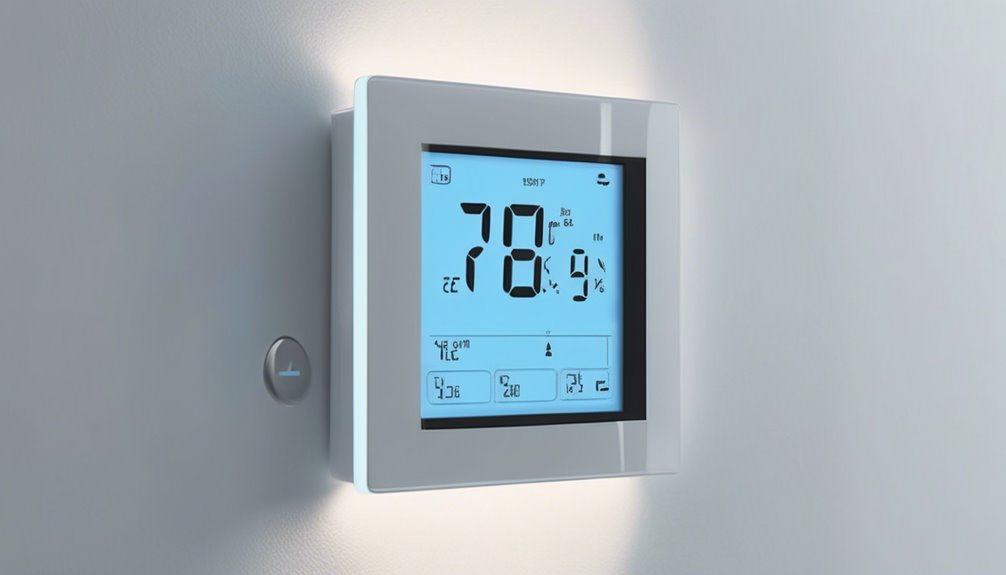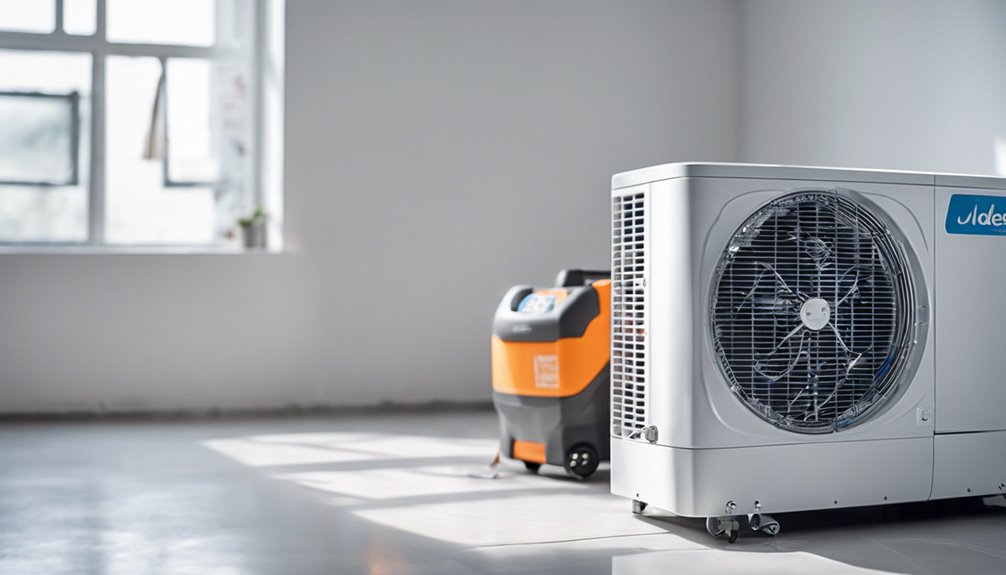To check if your AC thermostat is working, start by ensuring it has power and the correct voltage. Next, verify the temperature setting and compare it to a separate thermometer to rule out sensor accuracy issues. Inspect the thermostat for physical damage, corroded terminals, or loose wires. If it's battery-powered, check the battery life and replace it if necessary. Finally, test the thermostat's functionality by checking its calibration and wiring connections. If you're still unsure, there's more to explore to get to the root of the issue.
Key Takeaways
- Check the thermostat's power source by verifying battery life or electrical connections and ensuring correct voltage.
- Verify the thermostat's temperature setting is reasonable and calibrated correctly by comparing it with a separate thermometer.
- Inspect the thermostat for physical damage, such as cracks, corrosion, or loose terminals, which can affect its functionality.
- Test the thermostat's functionality by checking its calibration, power reception, and wiring connections.
- Consult the user manual or manufacturer's instructions if unsure about the thermostat's operation or troubleshooting procedures.
Check the Thermostat's Power Source
First, ensure the thermostat has power by checking its battery or electrical connection.
If it's battery-powered, try replacing the batteries or checking their expiration dates. For wired thermostats, inspect the electrical connections for signs of wear or damage. Make sure they're securely connected to the thermostat and the AC unit.
Perform voltage checks to ensure the correct voltage is reaching the thermostat. A multimeter can help you measure the voltage at the thermostat's terminals. If you're unsure about the voltage requirements, consult the thermostat's manual or manufacturer's website.
Verify the Thermostat's Temperature Setting
With the power source checked, you can now focus on the thermostat's temperature setting.
Ensure the thermostat is set to a reasonable temperature, typically between 68°F to 72°F (20°C to 22°C).
Set your thermostat to a reasonable temperature, between 68°F to 72°F (20°C to 22°C), for optimal performance.
Check if the thermostat's temperature calibration is correct by comparing it with a separate thermometer.
A discrepancy might indicate sensor accuracy issues.
If the thermostat's temperature reading is off, it may not trigger the AC to turn on or off correctly.
You can try adjusting the thermostat's temperature setting to see if it responds accordingly.
If not, it may be a sign of a faulty thermostat.
Look for Signs of Physical Damage
Inspect the thermostat's exterior and interior for signs of physical damage, such as cracks, dents, or corrosion.
Check for a cracked casing, which can expose the internal components to dust, moisture, or other environmental factors that can affect its performance. Also, inspect the terminals for any signs of wear or looseness. Loose terminals can cause the thermostat to malfunction or not function at all.
Make sure all wires are securely connected to the terminals. If you find any signs of physical damage, it's likely that the thermostat isn't working properly. In such cases, consider replacing it with a new one to ensure your AC system operates efficiently and effectively.
Check the Thermostat's Battery (If Applicable)
If your thermostat is a wireless or programmable model, it likely relies on a battery to operate. You'll want to check the battery to ensure it's not the culprit behind your thermostat's issues. A dead battery can prevent your thermostat from functioning properly, so it's essential to check the battery life.
| Battery Type | Average Battery Life | Replacement Indicator |
|---|---|---|
| Alkaline | 1-2 years | Low battery indicator on the thermostat's display |
| Lithium | 5-7 years | Low battery warning or a sudden loss of thermostat functionality |
| Rechargeable | 2-5 years | Low battery indicator or a decrease in thermostat performance |
| Mercury | No longer used | N/A |
| Nickel-Cadmium | 2-5 years | Low battery warning or a decrease in thermostat performance |
Regular thermostat maintenance, including battery checks, can help extend the life of your thermostat and prevent issues.
Test the Thermostat's Functionality
Now that you've ruled out battery issues, it's time to test the thermostat's functionality to identify any underlying problems.
This step will help you determine if the thermostat is working correctly or not.
To do this, follow these steps:
- Check the thermostat's calibration to ensure it's set correctly.
- Verify that the thermostat is receiving power and that there are no issues with the wiring.
- Check for faulty wiring or connections that could be preventing the thermostat from working.
- Use a multimeter to test the voltage at the thermostat's terminals.
- Consult the user manual or manufacturer's instructions for specific testing procedures.
Frequently Asked Questions
Can I Use a Thermostat With a Different Voltage Rating?
You shouldn't use a thermostat with a different voltage rating, as it can be dangerous and lead to malfunctions. Check the voltage compatibility before buying, ensuring the thermostat adapts to your system's voltage requirements for safe and efficient operation.
How Often Should I Replace My Thermostat's Batteries?
You'll typically need to replace your thermostat's batteries every 6-12 months, depending on usage and quality. Regularly checking battery life is crucial for thermostat maintenance, ensuring your AC runs efficiently and effectively.
Will a Faulty Thermostat Increase My Energy Bills?
You'll likely notice high energy consumption if your thermostat is malfunctioning, as it can cause your AC to run constantly or inefficiently, driving up your energy bills, and a faulty thermostat can be the culprit behind these increased costs.
Can I Calibrate My Thermostat for More Accurate Readings?
You can calibrate your thermostat for more accurate readings by adjusting the sensor's position to minimize temperature fluctuations, ensuring it's away from direct sunlight and heat sources, which helps maintain optimal sensor accuracy.
Do Smart Thermostats Require a Hub or Bridge to Operate?
You'll find that most smart thermostats don't require a hub or bridge to operate, thanks to wireless connectivity and smart home integration, allowing you to control them directly from your phone or voice assistant.
Conclusion
You've checked the thermostat's power source, temperature setting, and physical condition, and tested its functionality. If everything seems okay, but the AC still isn't working, it's likely the thermostat is faulty. If you're still unsure, consider consulting a professional. Remember to regularly maintain your thermostat to prevent future issues. By following these steps, you've taken the first crucial steps in identifying and potentially resolving the problem with your AC thermostat.



